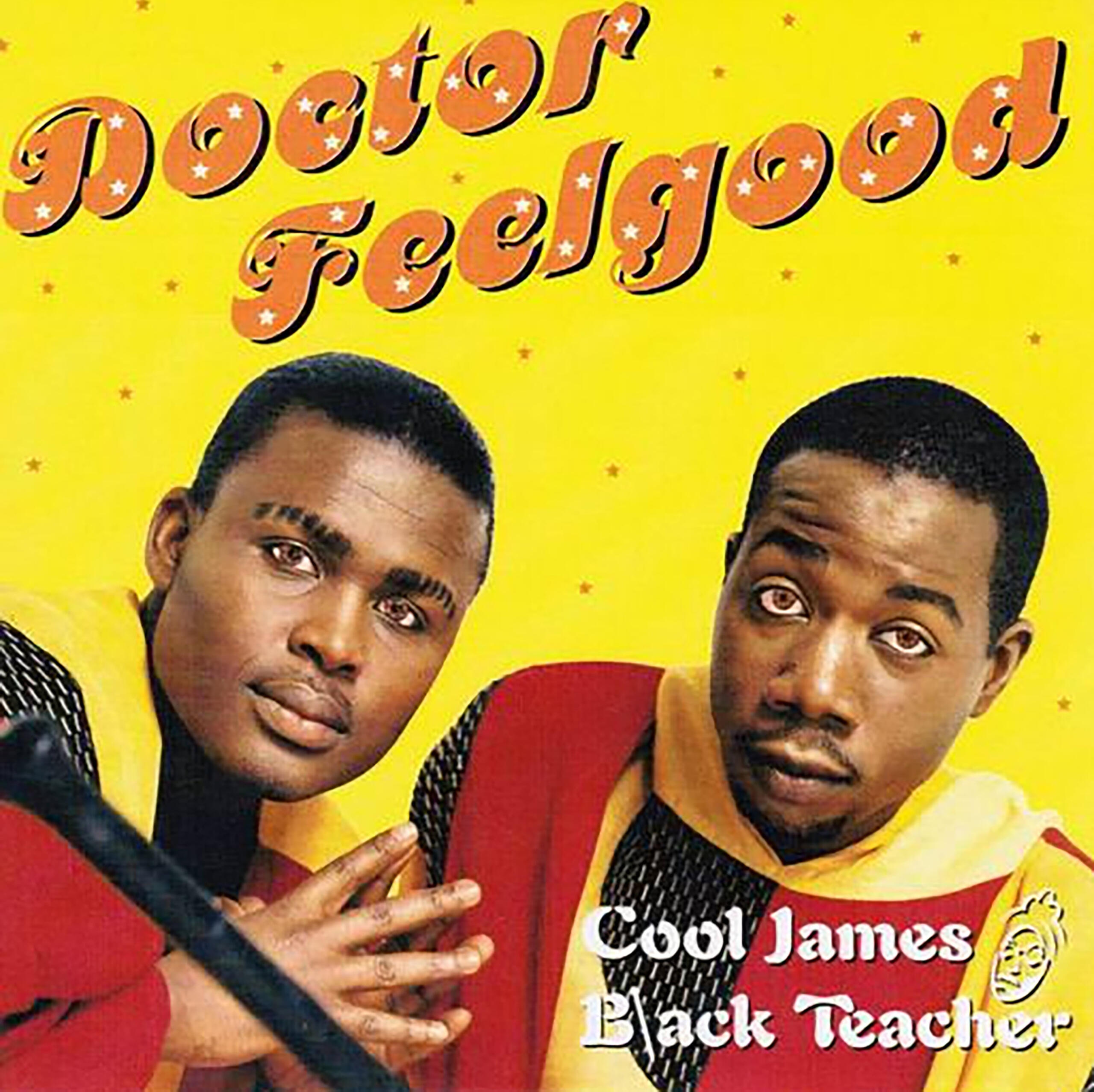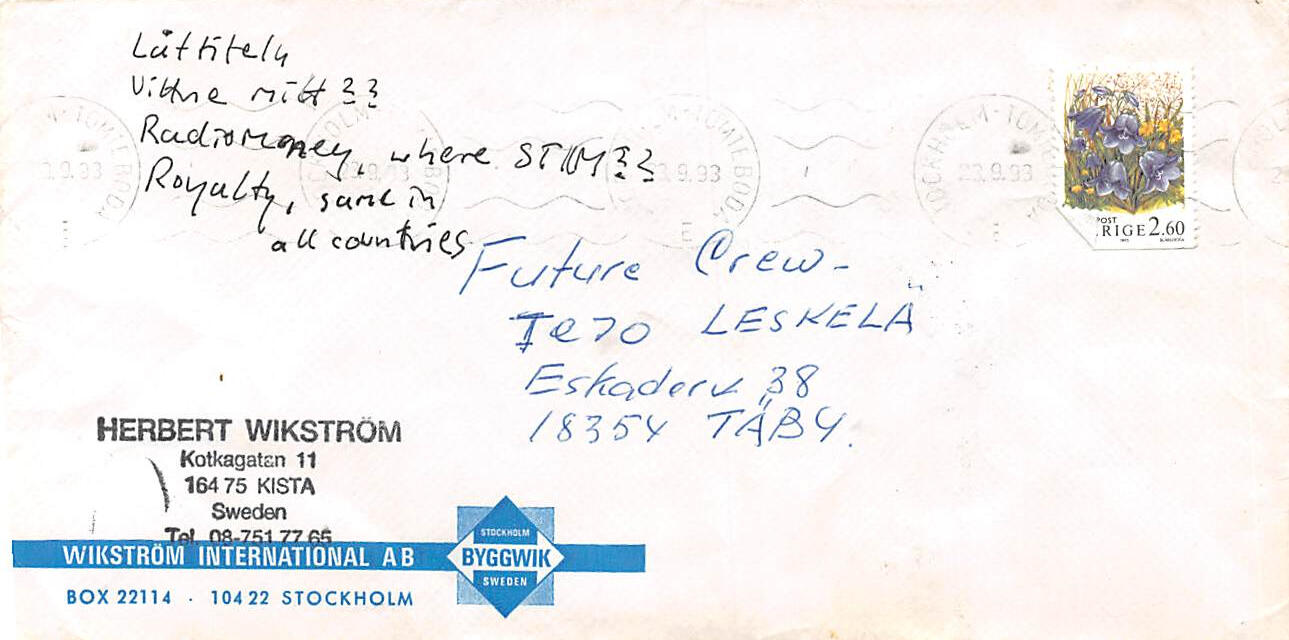The story of Cool James &
Black Teacher & Dr.Feelgood

Written by Pat Reiniz, producer and co-writer of the original version from 1994.In 2025, the Dr.Feelgood Gold mix will be made available online. It will be followed up by a couple other unreleased tracks by CJ & BT, some of them made back in the day, some of them re-produced.Spotify link
YouTube linkCJ & BT released their first single “Thank You, Thank You” in 1992 on S Records, a sub-label and low-budget talent nursery to Stockholm Records (Polygram) in Sweden. In 1994, we had our first hit with Dr.Feelgood which were No.2 on the Swedish singles chart, No.1 on the radio shows Tracks and Sommartoppen and also a hit on the singles chart of Finland. We followed it up with another two Top 10 hits in Sweden: Godfather and Rhythm of the Tribe.Later, CJ & BT were dropped by the label, so I signed them to my production house, Fire Brigade (now part of Rednex Limited), where we re-produced Dr.Feelgood, now called Gold mix. It was licensed to CNR Benelux and release in Europe in 1999 without success.James co-founded the Tanzania Music Awards. He died in a car accident in Dar es Salaam, Tanzania, on 26 August 2002. Black Teacher remains in Sweden.Dr.Feelgood was mainly co-written by me and James. I made an instrumental background which became the chorus. James added the chorus line and lyrics “Call him Dr.Feelgood”. The other parts built from that and was written together, except Black Teacher's rap, which was written by himself.The instrumental hook that is the main signature and intro of the track came about in a peculiar way. It was not created as usual through creative writing, but through mathematical chance.In 1994, EuroDance had exploded and become extremely successful. For instance, when Cotton Eye Joe was No.1 in Germany on 1st of November 1994, 16 out of 20 songs on the Top 20 German singles chart were EuroDance. We made a t-shirt of that chart.The most usual chord progression in the early era of EuroDance was A F G A, e.g. Rhythm is a Dancer by Snap etc. When I sat down to write a new track, which later became Dr.Feelgood, I thought I would try another chord progression, but similar. I did so theoretically, by programming the chords in the computer, but without playing or listening to them. I chose A G F C. Purely theoretical (as I am not musical enough to hear chords in my head, think Beethoven, or any talented musician...).Then, in the same fashion, I wrote the instrumental signature melody. Not by playing the keyboard or listening, but by adding notes, which theoretically seemed to fit the chords, into the computer, one by one. Also, the pitch bends (that are a “weird” signature part of the melody) were added in this way.This is a very unusual way to write. I probably had never done it before, and probably have not done it since. It is almost like a pre-cursor to AI writing. It is done by mathematical chance. 100% math. 0% feeling.Then I pressed play and it sounded pretty great. Lucky me.Another oddity is the sound itself. It is a sound that would never normally be used, since it is the preset sawtooth sound of the AKAI S3000 sampler (99% of all producers in these days had it). When you turn on the machine, there were 4 preset sounds: sawtooth, pulse, sine and square. They are not meant to be used, but are there to check if the machine is working properly. They sound pretty poor.However, I just wanted to quickly come to the point where I could try this new way of writing, so I didn't want to bother inserting a floppy disc and choosing sound, before doing the chord progression and riff. I thought I could just as well deal with that later. The result turned out so great that I never bothered to change it.James heard the instrumental background (now with drums bass etc), and the potential, and added the chorus line. Initially, Dr.Feelgood didn't mean anything, it was just interesting words to sing.
I added the lyric parts:
“Any day, you will walk the walk of fame
Any way will forever bear your name”
Which doesn't mean anything other than is meant to sound interesting.and
“Shine on you, don't leave without believing what doctor say is true
When you're blue, no failing when inhaling what doctor give to you”
Which is a clear reference to the doctor. Note the unusual rhyme in the first half of the sentences.As the song gained support by the label and started to become a priority release, me and James made up the story that the lyrics was about a doctor in China that was in fact a drug dealer who have had shady businesses with James when he was there (picture an 80's opium den in Shanghai). It was entirely made up as neither of us had ever been there. In those days it felt important to attach an intrigue with a song, and the story was lied about in many interviews.
My favorite sentence is “no failing when inhaling”. It is lyrics like that that makes me giggle myself to sleep.
Later in 1994, I produced Cotton Eye Joe with Rednex, which became a smash hit world wide. The whole Rednex project was packed with such intrigues, most of them made up.


Here I include scans of the envelope that was used to write the lyrics on. Probably on Roslagsbanan (commuter train) from Näsby Park to Tekniska Högskolan. This was my routine and that is also where I wrote the verses for Cotton Eye Joe. The envelope was addressed to (misspelled) Teijo Leskelä, who wrote Wish You Were Here for Rednex, but addressed to my flat at Eskadervägen 38. It is from our studio landlord Herbert Wikström, who said he invented "lecakulor". There is no Google translation for that.Another noteworthy thing about Dr.Feelgood is that it includes a massive amount of 9 different parts of writing sections: instrumental main hook, chorus, aah-aah part, French verse by BT, secondary instrumental riff, “Shine on you” vocals, a third instrumental riff, “Any day”-vocals and the English verse by James. It was a lot already in those days, but is probably entirely unheard of in the music of 2025.The A&R and CEO of Stockholm Records Ola Håkansson, also lead singer of famous band Secret Service and Ola & The Janglers, and A&R discoverer of Cardigans, Zara Larsson and Icona Pop, didn't seem to mind. At least not enough to correct it at the time, though I do remember it being a topic of discussion. “Kill your darlings” is a famous expression in the music business, when you are supposed to eliminate good parts for the sake of the whole track. We seemed unable to do so.Our studio at the time, the Future Crew / Mannequin Studios at Mejerivägen 7, Liljeholmen, Stockholm, was quite limited and barely had enough resources to make a recording worth for release. Among other things, the midi kept messing up and couldn't keep up with the rapid flow of information. As a result on Dr.Feelgood, five bass notes are missing. I made countless of mixes, but none of them had less, so in the end, I decided to go with the one with only five bass notes missing, hoping that no one would notice. So far, no one has mentioned this.In the build up to the release, it became clear that the label and everyone on board, started to believe that it had serious potential to be a big hit. The anticipation was very high. Promise was in the air. So, a month before the release, I decided to write a diary called: “Dr.Feelgood and the evil competitors”, where I wrote daily notes on other tracks moving up and down the charts, being introduced on radio etc, in comparison with the achievements of Dr.Feelgood. It was written on a green and white striped note book that is very famous to everyone who went to school in Sweden in the 80's.
In April 1994, I was still a nobody. An unknown producer. One late Wednesday afternoon, me and James were waiting by ourselves by the fax machine at a desolate Stockholm Records office, waiting for the Swedish singles chart to get printed. Dr.Feelgood was the highest entry at No.16. It later became No.2 and one of the biggest hits of the summer, and the 21st biggest hit of the year in Sweden. That moment and that day by the fax will be unforgettable to me. In a flash, I had gone from being a person without any useful credits to becoming a hit producer. The feeling was out of this world. High as a kite.All the efforts that I had put in actually paid off and proved that I had what it took to become successful in the music business, both as a writer and producer. It was absolutely amazing. Later that year, Cotton Eye Joe exploded onto the charts of the world, and life was never the same. I was awarded No.1 most successful producer at Tracks in 1994. Pretty much the only award a producer could get at the time.However, no feeling beat the one I had when I held the Dr.Feelgood fax in my hand that gave me the final proof of no longer being an imagenary talent. It was real.The follow-up single, Rhythm of the Tribe, was also written by me and James, except Teacher's verse. It was originally written by me as a homage to Torsten Fenslau, a German music producer who died in a car accident in 1993. This news struck me especially hard since his death came just months after his big breakthrough with Culture Beat's Mr.Vain.All the efforts and knowledge that he had built up, eventually came to nothing, or at least only a few months of being able to enjoy his success. At the time, I was a struggling and broke music producer without a hit, and the thought that I could meet a similar faith felt dreadful. Pointlessness to the very syllable. The opening line of the original verse goes: “My victory is gone, though I just made me number one.”I had a similar reaction when Denniz Pop died in 1998, so I named my new Volvo, which I collected from the shop one day after the news of him dying, after him. The name of the car is Dagg and still exists today.Denniz Pop should be called the forefather of EuroDance, through his breakthrough with Dr.Alban's It's My Life in February 1992. It is my opinion that this is the first EuroDance track. Some credit should also go to Snap's Rhythm is a Dancer which was released in March 1992.The female vocals on It's My Life was sung by Paola Toro, who was part of the entourage that came with James to our studios in 1991. Paola also sang a few songs for CJ & BT, but not Dr.Feelgood, which is sung by Anne Haavisto and Litza (shine on you part).Dr.Feelgood Gold mix is produced by Rico & Bear and me, and released by CJ & BT and Goldiloque, which is a collective pop dance trademark for newly released material that has remained unreleased since back in the 90's, combined with new productions in a similar genre.
Contact
Goldiloque.com LINK
Email: hits @ this domain
Spotify link: spotify:album:2T0YOIlYWdW3eRjLgYqFqL